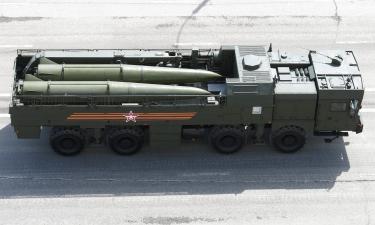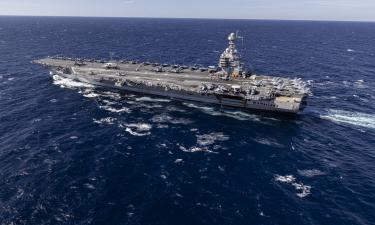Sea Launch rocket explodes several seconds after take off
A Sea Launch Co. rocket carrying a commercial communications satellite blew up during its launch from an oceangoing platform in the equatorial Pacific.

The Boeing-built NSS-8 satellite was intended for Netherlands-based SES New Skies. The Zenit-3SL launch rocket was Ukrainian-built and the engines are Russian-made.
"There was an explosion as we were lifting off," Sea Launch spokeswoman Paula Korn said from the company's home port in Long Beach, California.
The platform is cleared of all personnel during launches, which are conducted remotely by a mission control team aboard a ship, the Sea Launch Commander, stationed several miles (kilometers) away.
Korn did not know the condition of the self-propelled platform Odyssey, a converted oil platform.
The blast occurred at the scheduled 3:22 p.m. PST (2322 GMT) launch time. It was not known if the Zenit-3SL rocket actually lifted off the platform.
A Webcast of the launch was halted and replaced with the message: "Anomaly on NSS-8 mission. Broadcast concluded."
A failure review oversight board will be formed to determine what happened, Korn said.
The NSS-8 satellite, which was insured, was to have been used for audio, video, data and Internet services for countries in Europe, Africa, the Middle East, the Indian subcontinent and Asia, Sea Launch said. SES New Skies has five other satellites in orbit and another under construction.
SES New Skies said in a statement issued from The Hague that the satellite was a total loss.
It was intended to replace the company's existing NSS-703 satellite, which will now have to remain in its orbital position to continue serving existing customers until at least 2009, the company said.
A satellite now under construction, NSS-9, will be launched in 2009, allowing another satellite, NSS-5, to move into position to replace the NSS-703, the company said.
"The NSS-8 launch failure is thus not expected to have an impact on existing customers or revenues," SES New Skies said.
Based in the Port of Long Beach, Sea Launch is owned by Boeing, RSC-Energia of Moscow, Kvaerner ASA of Oslo, Norway, and SDO Yuzhnoye/PO Yuzhmash of Dnepropetrovsk, Ukraine.
The company sends its vessels to the equator for each mission because the physics of Earth's rotation allows rockets to carry heavier payloads than they could from other locations.
The system has had 23 previous launches since its first in 1999.
During the third launch, on March 12, 2000, the rocket failed to gain enough speed to reach orbit and a communications satellite was lost. During a June 28, 2004, launch an upper-stage engine shut down prematurely and left the payload in a lower-than-planned orbit, but the satellite was later raised to the right position.
The Zenit-3SL rocket has three stages, all fueled by kerosene and liquid oxygen. It is about 200 feet (60 meters) tall and 14 feet (4.2 meters) in diameter at its widest.
Russian efforts to get into the commercial satellite launch business have suffered a series of notable failures recently, the AP reports.
While Russia's manned space program is seen as a success - Russian rockets consistently and reliably shuttle crews and cargo up to the international space station - its efforts to expand into lucrative commercial satellite launches have seen several embarrassing failures.
In March 2006, a Proton-M booster rocket failed to put an Arab commercial satellite into orbit. In July, a Russian-built Dnepr rocket carrying 18 satellites crashed shortly after takeoff from the Baikonur facility in Kazakhstan, spreading highly toxic fuel over a wide swath of uninhabited territory and prompting Kazakh officials to ban Dnepr rocket launches.
Subscribe to Pravda.Ru Telegram channel, Facebook, RSS!





